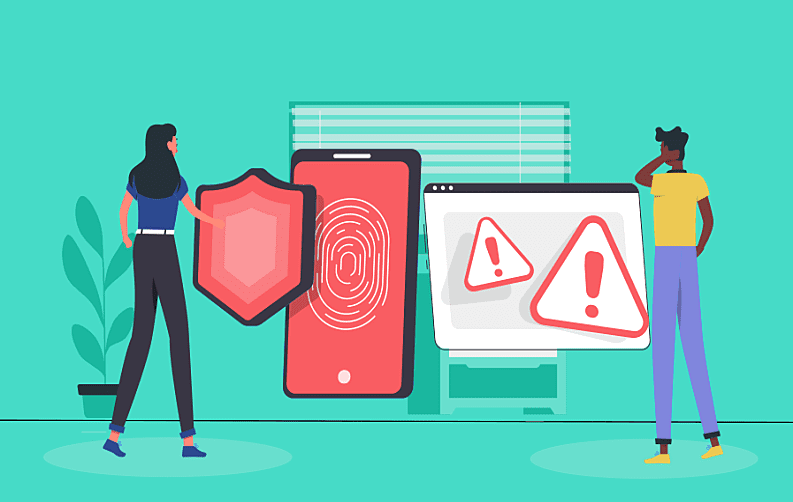
The popularity and adoption of digital workplace apps by companies to enhance interactions and collaborations have grown exponentially. These technology-based applications promise to streamline employee relations in a single portal where information can be accessed easily and paper-free. For instance, a single app can provide scheduling, task management, timekeeping, track expenses, monitor productivity, and push notifications.
Without a doubt, these new technologies are the next big thing in employee management. However, while these apps come with the benefits of convenience, they also expose your workplace to various risks. They also open up your business to various class action litigations.
For instance, we all use workplace chat apps to schedule meetings, discuss current tasks, ask for feedback, but have you ever thought how these workplace messaging apps can be risky as an employer. In this article, we will explore the legal risks and how to mitigate them.
The Legal Risks of Digital Workplace Apps
Legal policies guiding the use of digital workplace apps are a new and developing area of employment law. Nonetheless, legal guidelines on digital workplace apps are categorized as follows -
1. Expense reimbursement
Several states have enacted the employee reimbursement law, which requires businesses to indemnify employees for any business-related expenses they incur. Employees can sue businesses to reimburse costs involved in the acquisition and use of devices that support workplace apps. They can also seek compensation for the costs of cellular data and home data plans.
2. Off-time work
The introduction of remote work blurred the thin line between work and off-work hours. This is because some employers expect their employees to access mobile apps even when not on duty. If such situations were not captured in employment contracts, employees have a right to claim unpaid or overtime wages.
3. Interruption of rest or meal periods
To avoid off-time compensation claims, HR managers may direct their employees to maximize their working hours, even if it means checking workplace application during duly designated rest and meal hours. If such occurs, employees have a right to claim compensation.
4. Content-based claims
While digital workplace apps provide unmatched convenience, they make content screening quite difficult. This increases the risk of disputes arising from improper communication and other third-party complaints, including discrimination, invasion of privacy, harassment, workplace bullying, and defamation. This is heightened when employees are tasked with sharing social content about the business.
The claims mentioned above are serious collective action suits that come with adopting digital workplace apps. Unfortunately, the consequences and fines of these claims can be costly for employers. Therefore, to effectively enjoy the benefits of digital apps, employers should find ways to mitigate these risks.
Ways of Mitigating Legal Risks Posed by These Apps
Supporting our foremost question, are workplace apps risky for employers, let’s find out ways to reduce risk and safeguard your workplace from unethical practices. As mentioned, the adoption of digital workplace applications is on the rise, despite these legal risks. To balance risks and rewards, employers should implement the following mitigating strategies.
1. Set Clear Policies
Setting clear policies and expectations is the first step in ensuring the proper use of these collaboration tools. Employers should outline formal policies that guide the use of enterprise digital workplace platforms. For instance, there should be specific policies guiding how employees should communicate without bullying or expressing profanity.
2. Provide Compulsory Training
Employees should also be trained on the acceptable use of these tools in line with company policies. They should read and sign against these policies to exempt employers from being held liable in case of any misfortunes. While this is time-consuming, it is among the best ways of avoiding the improper use of digital workplace applications.
3. Manage Users and Groups
Another good way of preventing unsanctioned misuse of both private and public platforms is by restricting employee abilities. For instance, you can limit who can post on a large company platform. Similarly, access to private channels should be limited to crucial stakeholders and company managers. Moreover, Google Workspace apps, formerly G Suite, offers a powerful set of office and collaboration apps suitable for business. It gives you word processing, professional email, cloud storage, shared calendars, video meetings, and more, which is much safer and elegant to use.
4. Monitor the Apps
Employers should also monitor all collaboration platforms to avoid unnecessary misuse. Fortunately, several monitoring and data loss tools can be used to automate these processes, only requiring human intervention when suspicious behaviors have been flagged. These tools can be used to track keyword libraries containing inappropriate terms and sensitive data.
5. Configure Data Retention Settings
Another prudent way of managing collaboration tools is to configure its data retention settings. Digital workplace apps have data retention settings, which store conversations and files for a set period. For instance, consider Slack, one of the popular workplace chat apps, retains messages for the entire period of the workplace. While you shouldn’t retain conversations forever, don’t delete them quickly for reference if legal issues arise.
6. Eliminate Shadow IT Apps
Employees may resort to private collaboration tools not sanctioned and managed by their employers to keep their engagements private. They might as well find and use digital apps that suit their department without authorization. In both cases, such shadow IT apps are a serious threat to data security. To avoid such issues, your IT and compliance teams should find ways of unearthing shadow IT apps introduced by cheeky employees.
Final Words
The main point of adopting digital workplace applications is to foster engagement between your employees. However, it is impossible to predict how they will engage in these platforms. Therefore, drafting a detailed compliance plan with the help of employment lawyers can maximize the benefits of these apps without facing any legal ramifications.















